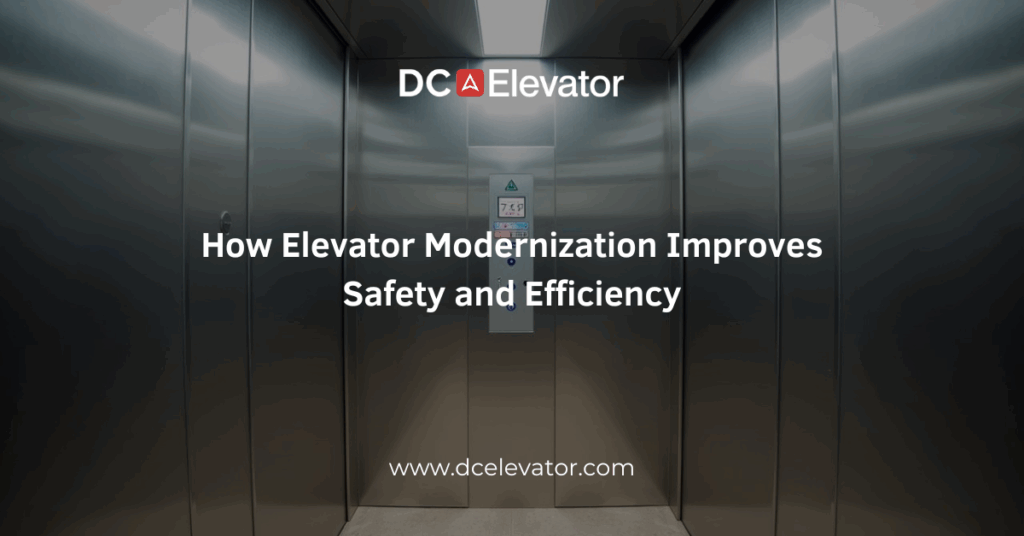Ever experienced an elevator that jolts to a stop or takes longer than expected to arrive? It’s not just frustrating—it could signal outdated equipment that poses safety and performance risks.
Elevators are central to how occupants experience your building. When they’re slow, unpredictable, or prone to breakdowns, they compromise not only convenience but also safety and operational efficiency. For aging systems, modernization isn’t just a luxury—it’s often a necessity.
Whether you manage a commercial high-rise, medical facility, or residential complex, understanding how elevator modernization can improve safety and streamline operations helps you protect your investment and serve your tenants better. Let’s explore how modernization can elevate both performance and peace of mind.
Outdated Elevators: A Hidden Risk
Many buildings still operate elevators installed 20 to 30 years ago. While regular maintenance helps, aging components can’t perform like modern ones. Common safety and efficiency issues with older systems include:
-
Unreliable door sensors that may not detect obstructions
-
Inconsistent floor leveling, increasing trip hazards
-
Slower response times and reduced energy efficiency
-
Obsolete components that are difficult or expensive to replace
As codes and building standards evolve, older elevators may also fall out of compliance—putting owners at risk of fines or increased liability.
Safety Benefits of Elevator Modernization
Modernization upgrades target safety from multiple angles. Here’s how:
1. Enhanced Door Operation and Detection
Upgrading to newer door systems ensures smoother opening and closing. Modern sensors provide more accurate detection of people or objects, significantly reducing the risk of door strikes.
2. Improved Emergency Features
Modern elevators come equipped with enhanced emergency lighting, communication systems, and fire service modes. These updates make a difference during power outages or building evacuations.
3. Accurate Floor Leveling
Older systems often stop slightly above or below the floor level—creating tripping hazards. Modern control systems deliver precision leveling, improving accessibility and reducing liability.
Efficiency Gains That Make an Impact
Safety is crucial, but so is the overall performance of your elevator system. Modernizing your elevator can deliver immediate and long-term efficiency benefits:
1. Faster and Smoother Ride
Modern controls and motors shorten travel times and eliminate jerky stops and starts. The result? A smoother experience for passengers and less wear on parts.
2. Reduced Downtime
Newer components are less prone to failure and easier to service. Fewer breakdowns mean fewer interruptions for tenants—and fewer emergency calls for you.
3. Energy Savings
Modern motors, lighting systems, and standby modes reduce electricity usage. This not only lowers your building’s energy costs but can also support green initiatives and certifications.
Customizing a Modernization Plan
Modernization doesn’t always mean a full system replacement. A cost-effective, phased approach might include:
-
Upgrading the door operator
-
Installing a new controller
-
Replacing outdated cab lighting and buttons
-
Improving the signal system
Working with a trusted provider ensures that each upgrade aligns with your building’s needs, budget, and long-term plans.
Conclusion
Elevator modernization is a smart investment in both safety and efficiency. By replacing outdated systems and upgrading key components, you create a safer, smoother, and more reliable experience for your building’s occupants—all while improving operational performance.
If your elevators are showing signs of age or inconsistency, it may be time to evaluate their condition. Contact us today for an elevator analysis and discover how modernization can help you protect your investment and enhance safety.
